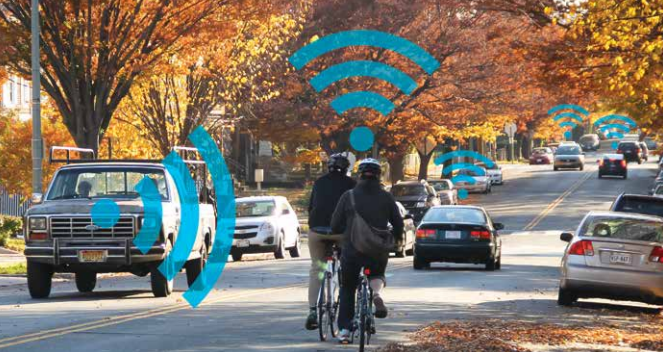DISCOVER YOUR LOCAL BICYCLING COMMUNITY
Find local advocacy groups, bike shops, instructors, clubs, classes and more!
How will new technology affect bike safety? Congress wants to know
New technology is coming for our roads, but what does that mean for you? It is hard to know what to think of self-driving cars, connected cars, and new safety technologies that augment the abilities of vehicle drivers. Last year, we asked on social media whether automated cars will increase or decrease safety for people who bike and walk – and most people said they didn’t have enough information to know.
Thankfully, Rep. Dan Lipinski (D-IL) has introduced the “Future Transportation Research and Innovation for Prosperity Act” or Future TRIP Act. The Future TRIP Act directs the Secretary of Transportation to establish an Automated and Connected Vehicle Research Initiative which, among other things, will:
- Create a research agenda that quantifies the benefits of advanced safety and vehicle connectivity technologies on the safety of motorized and non-motorized travel modes, and
- Provide guidance on the deployment of advanced safety and vehicle connectivity technologies for the reduction of pedestrian and bicycle fatalities and injuries.

As new transportation technologies are being developed it is incredibly important that we understand how they might affect all road users. With further research we might be able to confidently know that these advanced safety and connectivity technologies will not just make driving better, but will make our communities better. Current research already suggests that bicyclists will benefit greatly from advanced technologies, as long as they actually work for bicycles:
- According to the Insurance Institute for Highway Safety advanced vehicle detection systems that can detect bicyclists and automate certain vehicle reactions, like braking, could mitigate or prevent up to a total of 47 percent of crashes and 54 percent of fatal crashes if those systems work for the five most common vehicle-bicycle crash types.
- Several car companies, including Jaguar, Volvo, and Ford, have demoed technologies intended to help cars better react to bicycles or collect data on bicyclist safety. The specifics of how these technologies work, whether they are widely available, and how they are advertised is likely to affect the future of road safety. A worst case scenario is a slow and costly roll-out without a clear understanding of benefits, perhaps resulting in confusion about what cars can and cannot do – as demonstrated by this (graphic) viral video.
- A 2012 study by the Federal Highway Administration on the safety applications of vehicle-to-infrastructure communications found an estimated $7.5 billion annual cost of bicycle crashes not addressed by the study. As the US Department of Transportation comes closer to requiring vehicle-to-vehicle and vehicle-to-infrastructure technologies in new vehicles, it is important to understand how they might address the costs of bicycle and pedestrian crashes.
That’s why the League is endorsing Representative Lipinski’s TRIP Act. Please show your support for this bill by asking your Representative to co-sponsor HR 2886. Please tell your representative that we need to know how advanced safety and vehicle connectivity might affect the safety of people who bike and walk. Crashes involving bicyclists and pedestrians cost our societal $87 billion annually and we can’t afford to not know about these important improvements to roadway safety.